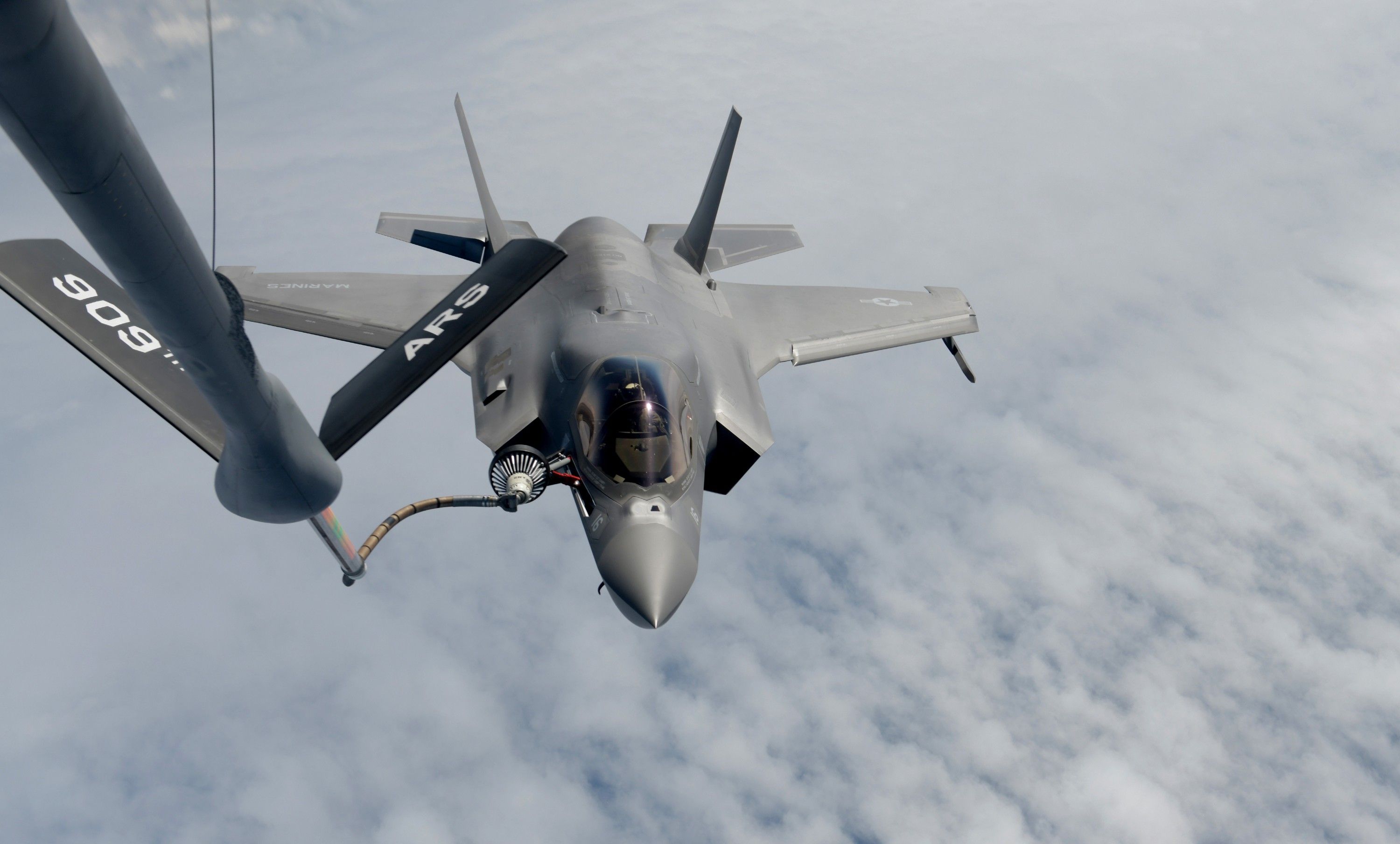The F-35 fighter jet program will cost taxpayers more than $2 trillion over its lifetime, cementing its place as one of the most expensive weapons programs in U.S. history, according to new estimates from the Government Accountability Office (GAO), an independent government watchdog.
The new price tag represents a dramatic jump from a 2018 estimate that set the program’s total cost at $1.7 trillion. Most of the bump comes from projected sustainment costs, which increased by 44 percent to a cool $1.58 trillion over the lifetime of the program. The Pentagon also extended the projected life of the plane to 2088 rather than the previous goal of 2077.
The news comes as Congress considers President Joe Biden’s budget proposal for next year, which asks for a record $895 billion in military funding. The spending package is separate from the White House’s request for $106 billion to fund weapons transfers to and security cooperation with Israel, Taiwan and Ukraine, which is still languishing in the House after passing the Senate earlier this year.
Of course, it’s not all bad news on the financial front. The Pentagon has brought down the estimated lifetime cost per F-35 by simply buying more jets and reducing the number of flight hours they will be expected to perform each year, according to the GAO.
But this is less than ideal on the war-fighting side of the equation. All three versions of the F-35 continue to fall far short of their target “mission capable rates,” a term of art referring to the percentage of time that any given aircraft is actually ready for battle. In 2023, the average F-35A was only in flying shape about 52% of the time — far short of the 90% target set by the Air Force, the GAO reports.
The jets have often been stuck on the ground due to engine design flaws that cause the aircraft to overheat, damaging parts and boosting maintenance costs. This inability to stay in the air has made it more difficult to get pilots sufficient training in real-life scenarios, which increases the likelihood of crashes and other costly accidents, according to Dan Grazier of the Project on Government Oversight.
The effort to fix these engine issues helps show why the F-35’s costs keep rising. In the early 2010s, the Pentagon asked military contractors to propose a new engine prototype while simultaneously pushing RTX subsidiary Pratt and Whitney to upgrade its original F-35 engine. Last year, the Defense Department told Congress that it no longer needs the $588 million per year prototype program, but lawmakers refused to kill it, choosing instead to fund the prototype and the upgrades simultaneously in a move one expert derided as “just throwing money at everything.”
Members of Congress defended the decision to keep the prototype by arguing that it will help advance technology for the next generation of fighter jets. Rep. Mike Rogers (R-Ala.) — a lead proponent of keeping the General Electric-led engine program — also happens to have a brand new GE Aerospace plant in his district.
Besides parochial concerns, the Pentagon also tends to underestimate the cost of programs in early stages of development. Just last week, the Congressional Budget Office revealed that the Navy drastically underestimated the cost of a new medium landing ship to carry small Marine Corps units. Early estimates put the program’s cost at $2.6 billion, but CBO says the Pentagon will most likely have to shell out between $6.2 billion and $7.8 billion for the ships — an overrun of more than 100%.
- Faced with tough choice on F-35 engine, lawmakers pick all of the above ›
- Would you pay $1.7 trillion for a plane that couldn’t fly? ›
- The US military chases shiny new things and the ranks suffer | Responsible Statecraft ›
- F-35: $2T in 'generational wealth' the military had no right to spend | Responsible Statecraft ›
- 'Flop': Proponents of the F-35 can't tell you that it works | Responsible Statecraft ›
- F-35 crashes same day Lockheed CEO touts its success | Responsible Statecraft ›















